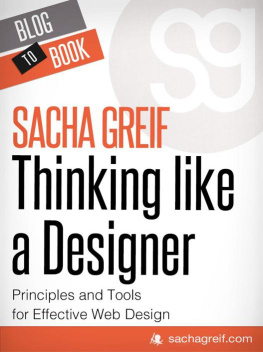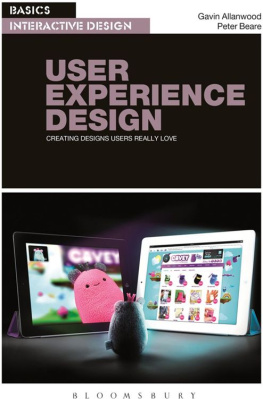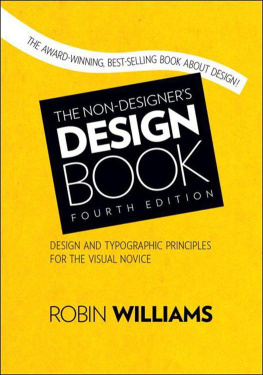The Big Meeting
On a cold Sunday in January, I left my home in Illinois to catch a late flight to San Francisco for a client meeting the next morning. But it wasnt just any meeting. About a dozen people from different areas of the company were all presenting designs to the CEO of a giant retail website. VPs, directors, product owners, and UX designers were all involved in putting together a 3-hour event that would lay the groundwork for an entire seasons worth of projects, as long as they could get this one executives approval.
The whole thing had started weeks before, when I sat in a different meeting about the meeting. While the rest of the product teams had been planning for it for a few weeks, our project had been overlooked in the previous review with the CEO. He asked why our project wasnt represented and so the rest of the team insisted that I be present at the next meeting. It was extremely inconvenient for me. I had been in San Francisco the week before and was now being asked to come back for a single day the following week. To make matters worse, I needed to create new designs to support a view for every product team that was being represented, so I had a lot of work to do to get ready. However, none of that mattered. It was obvious that everyone was prepared to drop what they were doing to make this meeting successful.
After working with several product managers and attending yet another meeting about the meeting, I finally had a list of designs I needed to provide and started working on them right away. The Friday before, I sat in on a 4-hour conference call with the entire team while each one practiced their presentation to a VP, who provided feedback and suggestions for how to best present their ideas to the CEO.
The whole charade centered around one thing: presenting design ideas to a CEO for the purpose of getting his approval. There were meetings about meetings, discussions about what he might say, late nights getting everything just right, and rearranging schedules to make it happen. I personally would spend 16 hours traveling, two nights in a hotel, and a whole day in a conference room just for this one meeting. Youll be happy to know the meeting went well. The CEO was very receptive, provided great feedback, and everyone set to implementing the interfaces they had designed. But thats not the important part of this story.
What struck me about this whole thing was the amount of effort that was going into just communicating design ideas to one person. The amount of time the other designers spent actually creating the mockups was nothing compared to the time and energy that went into finding the best way of communicating them. It was clear to everyone: if we dont get approval for our designs, our projects wont see the light of day. Communicating about the designs was more important than the designs themselves.
You may not have a large staff like this and you may not be working with a large company where a meeting with the CEO is such a big deal, but the principle is still the same. The way we talk about design to our stakeholders is critical to the success of our projects.
What This Book is About
The purpose of this book is to help designers become better communicators: to expertly explain their design decisions to the people who have influence over their project. The entire premise of the book centers around a meeting: a meeting with clients or stakeholders where we present and talk about our design decisions. Everything is written with this meeting in mind: before, during, and even after this meeting. Everything that we will walk through focuses on this meeting and is meant to help you become better at leading, participating in, and saving the day in these situations.

Some of these meetings will involve a lot of other people, but the majority of them involve just a few. Some might take place in a conference room while others are simple hallway conversations. So dont obsess over the details of how this overlays with your own reality, but instead focus on the overarching principles that you can apply in any situation. The goal is to remain flexible and able to adapt quickly in different situations.
I go into great detail about writing things down, asking questions, honing your listening skills, or making multiple designs. It might seem as if youd need weeks to prepare to talk to someone about your work. But in reality, it all happens very quickly. Sometimes youll have plenty of time to prepare. Other times youll have to do them off-the-cuff and make very quick judgment calls. Thats the reason learning these skills and committing them to habit is so important. You want articulating design decisions to be something you can do so effortlessly, that you no longer need to spend conscious effort applying all the advice contained in this book.
Talking to people about design might seem like a basic skill, but its actually really difficult to do. In my experience, designers have a difficult time adequately communicating to non-designers in a way thats effective. So keep reading and learn how to better communicate to stakeholders, keep your sanity, and deliver the best user experience.
Chapter 1
A Maturing Industry
To improve is to change; to be perfect is to change often.
Winston Churchill
Historically, designers have been relegated to the business of making pretty pictures. Most of us transitioned into UX from other areas. But now that UX is everywhere, we are thrust into the limelight of product development with our own ideas forming a critical piece of the puzzle. Its what weve always wanted! The problem? Were not used to having to explain ourselves to other people, especially non-designers.
As we look at how to talk about design to non-designers, I want to first provide the context to help us understand how we got here to begin with. My own career has been littered with experiences (good and bad) of articulating design decisions to stakeholders. Those experiences shaped my understanding of design and helped me see the importance of communication in the process. In addition, the term UX hasnt been around that long. Its important to know how the evolution of this term affects our ability to talk about our work with others. Of critical importance, however, is the shift thats taken place in organizations from seeing design as merely a utility to being a fully engaged partner in the product development cycle. Similarly, web and mobile interfaces have transitioned from being only platforms for products to being the product themselves. All of these factors greatly influence design within companies, teams, and the minds of our stakeholders. So lets jump right in and start all the way back in 90s.
Talking My Way Into Design
My path to working in UX started in marketing. I studied business for my undergraduate degree and, during college, quickly realized how powerful design was when it came to bringing products to life. Every class project needed something designed. Local bands needed posters and album artwork. Friends needed simple websites. So despite the fact that I wasnt in the art department at my school, I had access to the tools (computers and software) for creating products and began my journey there, self-taught.
It was easy to get freelance work as a designer. It seemed like everyone needed a graphic or web designer and so I did what I could to pay my way through college doing something I loved. One year, I got a part-time job doing web design for a small record label. In my senior year, I was working full-time at an electronic payment services company as the Marketing Coordinator although most of my time was spent designing print ads and the company website. By the time I graduated, I had a decent portfolio of design work and was ready to take on the world.












